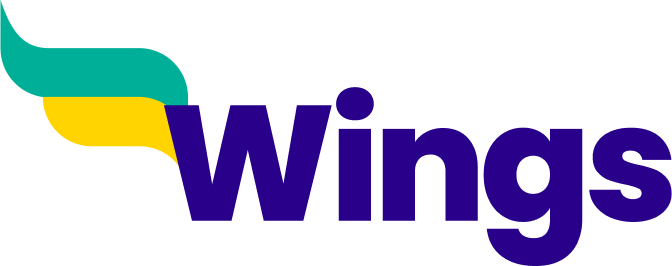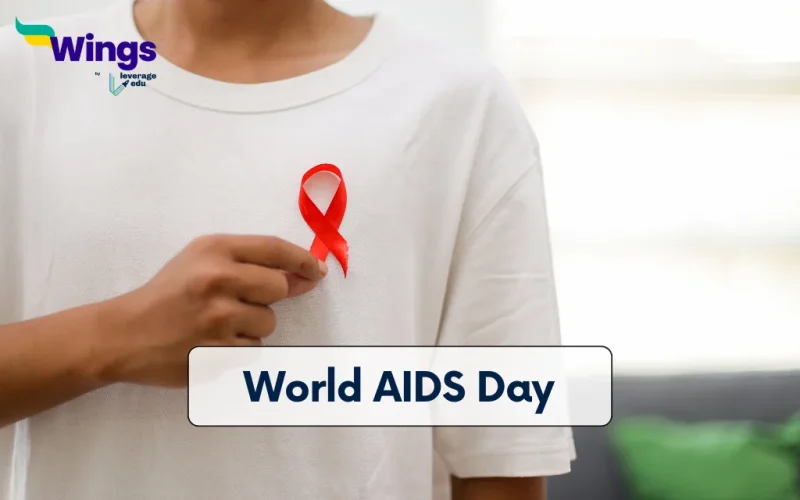World AIDS Day 2025, observed on 1 December, is a global day dedicated to spreading awareness about HIV and AIDS, supporting people living with HIV, and remembering those who lost their lives to AIDS-related illnesses. This day highlights the importance of early testing, prevention, treatment, and the need to fight stigma and discrimination that still surround HIV. The 2025 theme focuses on rebuilding disrupted health services and creating a stronger, fairer, and more inclusive AIDS response worldwide. In this blog, we provide the theme, history, importance, key facts, and essential awareness information to help readers understand the true significance of World AIDS Day 2025.
Contents
Theme of World AIDS Day 2025
The official theme for World AIDS Day 2025 is “Overcoming Disruption, Transforming the AIDS Response.” Announced by WHO, this theme highlights the need to rebuild HIV services disrupted in recent years and to create a stronger, fairer, and more inclusive AIDS response. It focuses on ensuring equal access to prevention, testing, and treatment, supporting affected communities, and transforming health systems to achieve the global goal of ending AIDS as a public health threat.
Why is World AIDS Day Important?
World AIDS Day holds great global importance because it serves multiple purposes, awareness, education, support, remembrance, and action. It is a day that brings people, communities, and nations together to understand the impact of HIV/AIDS and to encourage meaningful steps toward ending the epidemic.
1. Spreads Awareness About HIV and AIDS: Millions of people still lack clear information about how HIV spreads and how it can be prevented. World AIDS Day helps educate the public about safe practices, early testing, treatment options, and the importance of reducing risky behaviour. Increased awareness helps lower new infections and keeps communities safer.
2. Encourages Early Testing and Treatment: Many people living with HIV do not know their status, which delays treatment and increases the risk of transmission. World AIDS Day promotes the importance of timely HIV testing. Early diagnosis allows people to start antiretroviral therapy (ART) quickly, which helps them live healthy lives and reduces the chance of spreading the virus to others.
3. Fights Stigma and Discrimination: People living with HIV often face judgement, isolation, and unfair treatment in society. This stigma can prevent them from seeking healthcare or speaking openly about their condition. World AIDS Day spreads messages of acceptance, compassion, and equality. It encourages society to treat people with respect and to end harmful stereotypes.
4. Supports People Living With HIV: This day is a powerful reminder that millions of people around the world live with HIV. It encourages communities to stand with them, understand their struggles, support their rights, and ensure they have access to healthcare, education, and employment without discrimination.
5. Remembering Lives Lost: More than 30 million people have died from AIDS-related illnesses since the start of the epidemic. World AIDS Day honours their memory and acknowledges the suffering faced by their families and communities. This remembrance also inspires continued commitment to preventing further loss.
6. Highlights Global Health Inequalities: HIV continues to affect vulnerable groups more heavily—such as women, young people, LGBTQ+ communities, people who inject drugs, and those living in poverty. World AIDS Day shines a light on these inequalities and calls for fair, inclusive, and rights-based health services for everyone.
7. Motivates Governments and Organisations to Take Action: World AIDS Day urges world leaders, policymakers, educational institutions, NGOs, and healthcare providers to strengthen their efforts. It pushes for increased funding, improved healthcare systems, better education, and strong laws that protect people’s rights. It is a reminder that political commitment is essential to ending AIDS.
8. Promotes Community and Global Solidarity: The day brings together communities across the world—students, teachers, activists, health workers, volunteers, and everyday citizens. This unity creates a shared sense of responsibility and collective strength in the fight against HIV/AIDS.
9. Supports the Goal of Ending AIDS by 2030: The world aims to end AIDS as a public health threat by 2030. World AIDS Day helps maintain momentum by keeping the issue visible, spreading updated information, and motivating people to take action every year.
Also Read: Difference Between HIV and AIDS- A Detailed Guide
History of World AIDS Day
- The story of World AIDS Day began on 1 December 1988, when the day was observed for the first time.
- It was created by James W. Bunn and Thomas Netter, public information officers at the World Health Organization (WHO).
- It became the first global health awareness day ever declared by the United Nations.
- The date 1 December was chosen to receive maximum media attention between major international events.
- In its early years, the day focused mainly on spreading awareness among young people about HIV and AIDS.
- Over time, its purpose grew to include prevention, early testing, treatment, care, human rights, and global cooperation.
- In 1991, the red ribbon was introduced as the worldwide symbol of solidarity with people living with HIV.
- Today, World AIDS Day is marked in over 190 countries through campaigns, educational programmes, testing drives, and community events.
- It remains a powerful reminder to support affected people, fight stigma, and work together to end AIDS as a public health threat.
Global HIV Situation in 2025
The global HIV situation in 2025 shows both progress and serious challenges, with key data revealing the urgent need to strengthen prevention, testing, treatment, and support services worldwide.
- Over 40 million people worldwide are living with HIV, showing that HIV remains a major global health challenge even after decades of awareness and treatment efforts.
- Around 1.3 million new HIV infections were reported in 2024, indicating that transmission continues, especially in regions with weak healthcare systems.
- Approximately 630,000 people died from AIDS-related illnesses in 2024, highlighting the need for early diagnosis and timely treatment to prevent avoidable deaths.
- Millions still lack access to antiretroviral therapy (ART), especially in low-income countries, which increases the risk of severe illness and further transmission.
- Children and adolescents are still heavily affected, with many new infections occurring among young people due to limited education, stigma, and lack of youth-friendly health services.
- Sub-Saharan Africa carries the highest burden, with many countries facing high infection rates and ongoing challenges in providing widespread testing and treatment.
- The world is not on track to meet the 2030 goal of ending AIDS, mainly because inequalities, funding cuts, and social barriers continue to slow progress.
- Stigma and discrimination remain major obstacles, preventing many people from seeking testing, treatment, or support due to fear of judgment or rejection.
- Community-based HIV programmes face disruptions and reduced funding, weakening prevention efforts, outreach, and support services in several high-risk regions.
- Global health experts stress the need for stronger, more inclusive HIV services, focusing on prevention, early testing, affordable treatment, and protection of vulnerable groups to avoid reversing past progress.
Also Read: Speech on World AIDS Day
How is World AIDS Day Observed?
World AIDS Day is observed across the world through various awareness, educational, and support activities. People, schools, organisations, and governments come together to show solidarity and spread knowledge about HIV and AIDS. Here are the main ways it is observed:
- Awareness campaigns and rallies are organised to spread correct information about HIV prevention, testing, and treatment.
- Candlelight vigils are held to honour and remember people who lost their lives to AIDS-related illnesses.
- Red ribbons are worn as a symbol of support for people living with HIV and to show commitment to ending stigma.
- Health camps and free HIV testing drives are set up to encourage people to know their status and seek early treatment.
- Educational programmes in schools, colleges, and workplaces teach people about transmission, myths, facts, and the importance of compassion.
- Community events and sensitisation workshops support affected families and promote inclusive behaviour.
- Social media campaigns using hashtags like #WorldAIDSDay help spread awareness and reach millions globally.
- NGOs and healthcare organisations distribute informative materials and organise outreach activities in high-risk areas.
- Government and international agencies release reports, data, and updates on global progress and remaining challenges.
- Memorial events and storytelling sessions encourage people to share their experiences, offer hope, and build solidarity.
Role of Students and Youth in Awareness About AIDS
Students and young people play a vital role in spreading awareness about AIDS because they are active, informed, and influential within schools, colleges, and communities. Their involvement helps break myths, encourage open dialogue, and promote healthy and responsible behaviour. Here are the key roles they play:
- Educating peers with correct information about HIV transmission, prevention, and treatment to remove fear, confusion, and misconceptions.
- Organising awareness activities such as poster-making, seminars, rallies, debates, and street plays to spread knowledge in schools and neighbourhoods.
- Promoting early testing and healthy habits by encouraging their peers to understand the importance of timely diagnosis and safe practices.
- Using social media responsibly to share verified information, motivational messages, and awareness posts that reach large audiences quickly.
- Supporting people living with HIV by showing compassion, rejecting discrimination, and encouraging others to treat everyone with dignity.
- Participating in World AIDS Day events and campaigns to strengthen the global message of prevention, care, and equality.
- Volunteering with NGOs and health organisations working on HIV education, counselling, and community outreach programmes.
- Challenging stigma and discrimination by speaking up against hurtful behaviour and promoting acceptance and respect.
- Becoming youth ambassadors for health, using their voice to influence others and advocate for better awareness programmes in schools and communities.
- Building a future generation that is knowledgeable and responsible, helping reduce new infections and moving the world closer to ending AIDS.
Prevention Tips About AIDS Everyone Should Know
Preventing HIV is possible with the right knowledge and simple everyday precautions, and everyone should be aware of these essential prevention tips to stay safe and informed.
- Always use protection (like condoms) during sexual activity to reduce the risk of HIV transmission.
- Get tested regularly to know your HIV status and encourage your partner to do the same.
- Do not share needles or syringes, as HIV can easily spread through infected blood.
- Choose safe medical practices, ensuring blood transfusions and medical equipment are properly sterilized.
- Consider PrEP (Pre-Exposure Prophylaxis) if you are at higher risk; it significantly lowers the chance of HIV infection.
- Start treatment immediately if you test positive; early antiretroviral therapy keeps you healthy and prevents further transmission.
- Avoid sharing personal items like razors or toothbrushes that may come into contact with blood.
- Educate yourself from reliable sources to avoid myths and misunderstandings about HIV/AIDS.
- Promote healthy and safe behaviour within peer groups and communities, especially among young people.
- Support open communication about sexual health, testing, and prevention without fear or stigma.
Also Read: What is the Causative Germ for AIDS?
FAQs
December 1st is observed as World AIDS Day because it was the date chosen in 1988 by the World Health Organization and the United Nations to raise global awareness about HIV and AIDS. The timing helped gain maximum media attention between major international events, allowing the message to reach more people. Since then, December 1st has become a worldwide day to spread awareness, fight stigma, support people living with HIV, and remember those who lost their lives to AIDS-related illnesses.
The theme of World AIDS Day 2025 is “Overcoming Disruption, Transforming the AIDS Response.” This theme highlights the need to rebuild HIV services that have been disrupted in recent years and to create a stronger, fairer, and more inclusive approach to HIV prevention, testing, treatment, and care. It encourages countries and communities to focus on equality, support affected people, and take action to stay on track toward ending AIDS as a public health threat.
World AIDS Day is important because it raises global awareness about HIV and AIDS, encourages people to get tested early, and promotes access to life-saving treatment. It helps fight stigma and discrimination faced by people living with HIV, supports affected families, and reminds societies and governments to strengthen prevention, education, and healthcare efforts. The day also honours the millions who have lost their lives and inspires continued action toward ending AIDS as a public health threat.
AIDS was not “discovered” by one person, but the virus that causes it—HIV—was first identified in 1983 by French scientists Dr. Luc Montagnier and Dr. Françoise Barré-Sinoussi at the Pasteur Institute in Paris. Their work helped the world understand the cause of AIDS and led to major progress in testing, treatment, and prevention.
UNESCO plays an important role in the global response to HIV and AIDS by focusing on education, awareness, and the protection of young people. It works with schools, teachers, and governments to provide accurate information about HIV prevention, support comprehensive sexuality education, and fight stigma and discrimination. UNESCO also helps countries create safe and inclusive learning environments for students living with or affected by HIV, promotes gender equality, and supports community programmes that empower youth with knowledge and life skills to reduce risks and encourage healthier choices.
Related Reads
| World AIDS Vaccine Day | World Hypertension Day |
| World Day for Safety and Health at Work | World Brain Tumor Day |
| World Veterinary Day | International Albinism Awareness Day |
For more information about such informative articles, check the trending events page of Leverage Edu.
 One app for all your study abroad needs
One app for all your study abroad needs














